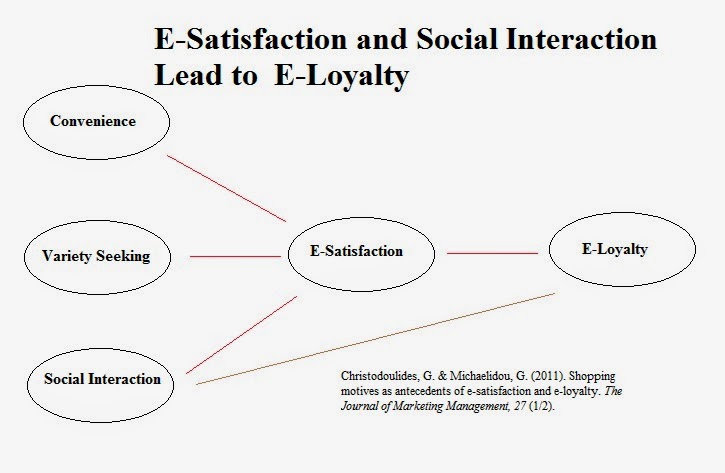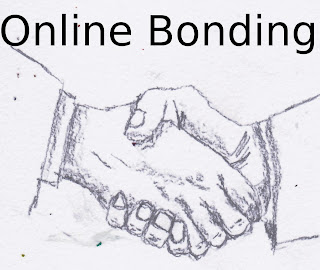Organizations that move online
often find themselves at a loss in trying to distinguish themselves and create
repeat customers in a virtual world where the possibilities and competition are
endless. Research helps to solidify a concept called online identity and
bonding that can help companies create communities of interconnected customers.
When such communities are formed the interaction rate and login rates of the
members increased providing more opportunities to sell products and services.
Online communities are
collections of people with complementary interests who communicate through an
online medium (Preece, 2000). As such the people within a community create
bonds with each other, interact, and have an impact on each other’s lives. Businesses
are constantly seeking ways to develop a customer’s identity with their
products and brands. One of the ways they can do this is through developing
online communities that take on a life of their own beyond specific offerings.
Generally, these communities
exist and succeed because members become attached to each other. When this
attachment is strong they participate more and are retained in the group
longer. Think of Facebook and how through family and friends we seem to be
drawn over and over to check each other’s lives and statuses. The process of
building a community around the lifestyles associated with certain product
groups can maintain life-long loyalty.
Let us look at an example; if you are an outdoor enthusiast
there are certain products that you will naturally take an interest with. These
products might include canoes, outdoor camping equipment, guns, outdoor
recreational vehicles, certain types of clothing and much more. Those items
will have special interest and meaning for the members of the group as they
communicate with each other and share experiences.
Online communities are all about those experiences.
Attachments are created when people develop a sense of group identity where
both purpose and character are developed (Hogg and Turner, 1985). Obviously,
you can’t just sell products and expect to have loyalty. Such groups could develop
around themes, articles, lifestyles, how to advice, trip reviews and much more.
You are selling the lifestyle in order to sell your products.
Companies that offer different varieties and forms
of these products could work together in a community hub. They can develop a
social group online and provide relative content and interaction that furthers
interest in the lifestyle. The sales pitch and information about products could
be embedded into the content provided as well as the site itself. To do this
well would required to focus on the development of relationships and bond among
members (Festinger, et. al., 1950) above and beyond the products.
A study conducted by Yuquing
et. al. (2012) helps to show which factors help create these online
communities. The researchers used a site called MovieLens.org to test their
independent and dependent variables. The site offered movie ratings and
recommendations. The site also offered a group profile page, group communication
stats, individual profile pages, and methods of communicating. The study used a
control group and a testing group that manipulated the variables.
Results:
-Participants reported that the profile page and the
movie group features were most important while the communication feature was
least useful.
-Support for the positive effects of identity-based
features and weaker support for bond-based features.
-When compared to the control condition participants
in the experimental condition increased their attachment to the movie group but
not to the site as a whole.
-Participants with access to profile pages visited
the pages more often.
-Exposure to group activities increased frequency in
identity conditions but not in the bond conditions.
-Those in the identity condition with access to both
group profiles and repeated exposure to their group visited the site with twice
the frequency.
Analysis and Business Application:
Frequency of visits and sales are associated
concepts. As people continually return back to their groups and profiles they
will naturally be more exposed to advertisements and influences. The research
helps highlight that having a profile and group outlets are important. One
provided self-identity while the other provided a group to interact with. The
research also supports a concept that through self-identity features we create
a level of group identity. The research doesn’t indicate how self-identity and
group identity influence each other. People with profile pages visited the site
more often. When the profile page and repeated group exposure were available
the frequency of visits doubled. This helps give some support to the concept that
individuals create their own “personal space” with profiles and will interact
with groups of “like mind” to create a sense of community. Yet all of this is
through self-identity versus bonding which means that online groups are collections
of people with pre-existing similar interests. In other words, one must be
interested in your site and products already to become productive and connected
individual with others of shared interest.
Festinger, L., Schacter, S., and
Back, K. (1950). Social Pressures in Informal Groups: A Study of Human
Factors in Housing, Palo Alto, CA: Stanford University Press.
Hogg, M. and Turner, J.(1985). Interpersonal
Attraction, Social Identification and Psychological Group Formation. European Journal of Social Psychology, 15 (1).
Preece, J. (2000). Online
Communities: Designing Usability, Supporting Sociability, Chichester,
England: Wiley.
Yuquing, R., et. al.
(2012). Building member attachment in online communities: applying theories of
group identity and interpersonal bonds. MIS
Quarterly, 36 (3).



